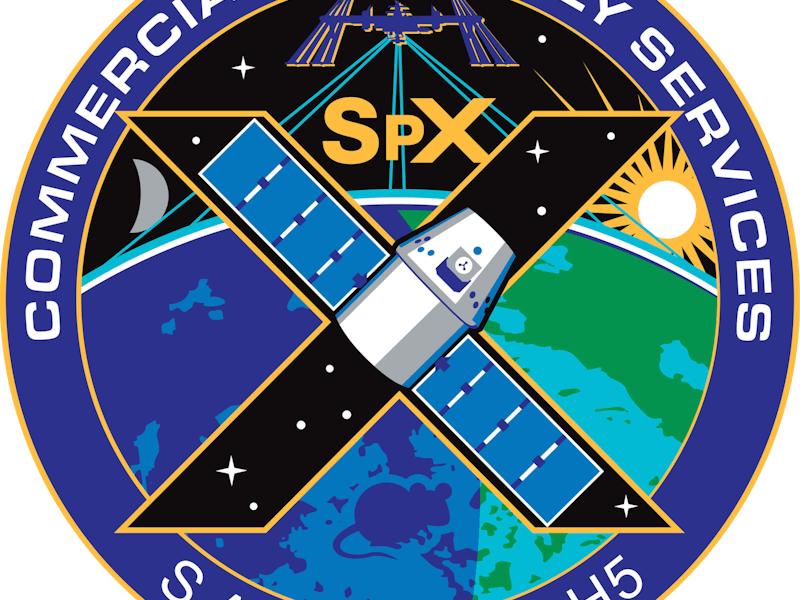SpaceX’s tenth Commercial Resupply Service Mission to the International Space Station takes off Saturday morning from the Kennedy Space Center in Cape Canaveral, Florida — and the mission patch lives up to the magnitude of the, uhh, deci-versary. It’s a patch you won’t mind having on your denim jacket.
Because of the volatility of rocket science and mother nature, the SpaceX launch calendar is always changing, and that was no different with this mission, which means we’ve seen this patch for more than a year now. In June 2016, the mission was scheduled for November, but “the anomaly in September” pushed it to January, and after a delay, the Falcon 9 is set to launch when the launch window opens at 10:01 a.m. Saturday.
This patch was released way back in November 2015, but only on Saturday will the mission it represents will be realized.
The “SAGE” and “STP-H5” wording signifies the mission’s payloads, the SAGE III and SAGE-NVP and STP-H5 science instruments that will be affixed to the ISS. “SpX-10,” (or “SpX-X” here) is shorthand for the mission, the tenth of twelve contracted ISS resupply mission for NASA.
Before the cool-looking tenth patch, there were of course nine others. Here’s the history of the collectible patches in descending order:
CRS 9, which launched on July 18, 2016, carried the first of two international docking adapters. The adapters allowed Boeing’s CST-100 Starliner and SpaceX’s Crew Dragon spacecraft to dock on the station when transporting astronauts in the near future as part of NASA’s Commercial Crew Program.
The CRS 8 mission launched on April 8, 2016. For the first time in all of rocket launch history, the stage one booster landed on the Of Course I Still Love You droneship in the Atlantic Ocean. Musk named the droneship after a ship in sci-fi author Iain M. Banks’s novel The Player of Games.
On June 28, 2015, CRS 7 experienced a failure when the first-stage booster detached from the second. A strut that was supposed to be securing a helium tank was faulty and the helium flooded into the chamber, causing the craft to over-pressurize and explode. It disintegrated 139 seconds into the flight and came sweeping back down to earth in a cloud of white smoke.
CRS 6 was launched on April 17, 2015. By this point, you might have noticed the four-leaf clover. It’s been part of every SpaceX mission patch since September 2008, when it was added to the Falcon 1 Flight 4 patch. The previous four Falcon 1 tests ended badly but the fourth was a success. Since then, the clover has stayed.
CRS 5 launched on January 10, 2015. Every mission contains science materials, so ISS astronauts can perform a series of experiments to understand critical components of astronaut health in space. This mission carried with it fruit flies and flatworms, which they used to study how wounds heal in space. Other missions have carried equipment to study astronaut vision, muscle deterioration, and even how to grow food.
CRS 4 launched on September 21, 2014. Some patches have the shadow of a mouse on them. This is to represent the live-in cargo on each rocket, which often include mice that astronauts use to study the effects of space on their health.
CRS 3 launched on April 18, 2014. In this patch you can see the dragon capsule returning to Earth. Dragon capsules can carry up to 5,000 pounds of cargo. Astronauts will send them back with various unnecessary space equipment and their trash. Each Dragon has a parachute so it can gracefully land in the ocean for retrieval.
CRS 2 launched on March 26, 2013. This patch features the Falcon 9 rocket in its entirety, before the first and second stage boosters detach. A Falcon 9 rocket is over 500 feet tall.
The first badge shows how the dragon capsule engages with the International Space Station. The last step before NASA astronauts get the supplies they need.
Oh, and if you really want that SpX-10 badge for your denim jacket, they are available.
